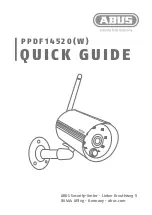
V1.02
Thom Hogan’s Complete Guide to the Nikon D300
Page 145
away minor differences in colors or gradients, but when there
is a gradual change of color that spans blocks, the block
averages sometimes differ enough that you can see the block
boundaries.
JPEG “blocks” tend to appear in broad
areas of gradually changing color, as in
the highly magnified portion of sky,
here. To the right of the arrow, you’ll
see several left edges of blocks. The
blocks don’t always appear in 8x8
pixel size. This sky, for example, varied
gradually from top to bottom, but not
left to right, resulting in bands of
blockiness rather than distinct blocks.
(I’ve exaggerated the contrast to make
the blocking more visible.) The only
way I can get even a hint of blockiness
from the D300 is to use
JPEG
compression
set to
Size priority
,
JPEG basic
as the JPEG Quality,
and
to post process on a smooth tone
ramp.
Here’s an example of
the mosquito artifact.
Look closely at the
very edges of the
letters in this
example. All the
letter edges have
obvious edge issues,
and the insides of the
P and R in the word
“PRODUCT” are
completely white.
A second artifact is usually seen at sharply defined edges (see
example, above). At high compression levels, these artifacts
can be extremely annoying, and often are called
“mosquitoes,” as it looks like a large swarm of flying insects
was present when you took the picture. This is the primary
artifact I see (rarely) in D300 JPEG images, though it is
difficult to produce in a way that’s clearly visible. But let’s try:
















































